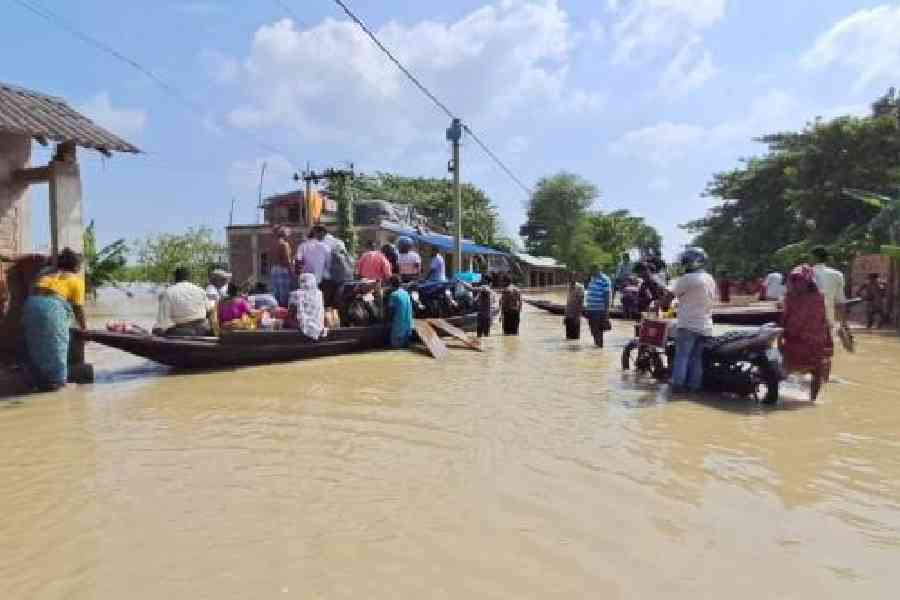The Bengal government has announced a three-step verification process to ensure thatfunds are distributed solely to those whose houses were completely destroyed in the recent floods caused by water released from DVC dams across several districts.
The initiative aims to guarantee that genuine victims receive compensation and serves as a precaution to prevent issues experienced during the post-Amphan relief efforts, when many affected villagers claimed they were denied government support.
Chief minister Mamata Banerjee recently declared that all individuals whose houses suffered total damage in the floods would receive financial assistance to rebuild, in addition to the 11.36 lakh beneficiaries of the rural housing scheme.
An SOP (standard operating procedure) issued by the state panchayat department specifies that fully damaged houses will be included in the eligibility survey for the rural housing scheme.
It states that beneficiaries from the Awaas Yojana sanctioned in 2022-23 and those listed on the permanent waiting list in the AwaasPlus databasewill be eligible for verification.
According to the SOP, the block development officers would form a team in each gram panchayat, conducting a door-to-door survey between October 21 and October 30. The findings of the teams at the gram panchayat level should be updated on the mobile application that was earmarked for this purpose.
To ensure complete transparency is maintained, the door-to-door survey should be video recorded. This would also helpto avoid confusion.
After the gram panchayat-level teams complete the door-to-door survey, the BDO or the joint BDO would cross-verify 15 per cent of the houses surveyed by the teams. Once this is done, theSDO-level and the district-level teams would again cross-verify 2 per cent of the houses to ensure no anomalies.
The local officer in charge or IC would also undertake independent sample verification in consultation with the district authorities to ensure no actual beneficiary was left out or there was any anomaly inthe list of beneficiaries before the final publication of the list between November 21 and 27.
“The verification process would be done for the rural housing scheme and the flood victims. Each beneficiary would get ₹1.2 lakh in two instalments. The funds will be released from December 20 from the state exchequer. The entire burden would be shouldered by the state government in the absence of the central funds,” said an official.
He added that the number of flood victims who get the funds for constructing the houses would be ascertained only after the gram panchayat-level survey was completed.
A senior official described the initiative as good and said it would ensure that only those who lost their houses would get the benefit.
“It would ensure that the post-Amphan chaos would not return… During that time thousands of complaints had come up that ruling party leaders and workers had received a compensation of ₹20,000each depriving the actual victims,” said the bureaucrat.
A section of TMCleaders also said that the step was required to ensure that the ruling party did not face the wrath of the beneficiaries.
“The party is passing through a delicate time in the urban areas following the RG Kar incident. Now, if the rural populace also starts agitating against the government alleging they were deprived of benefits meant for them, itwould be really tough to handle the situation,” said a TMC MLA.











